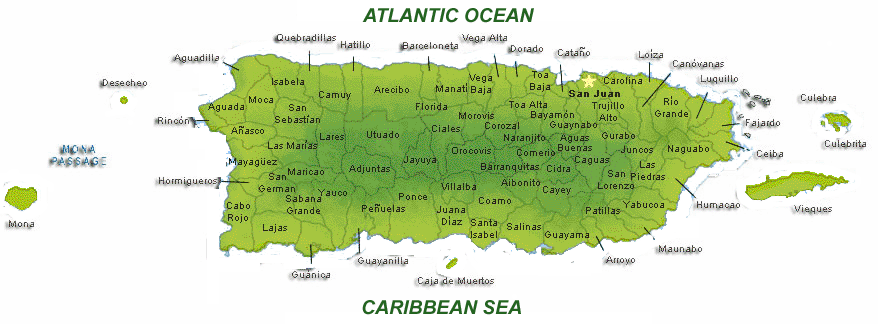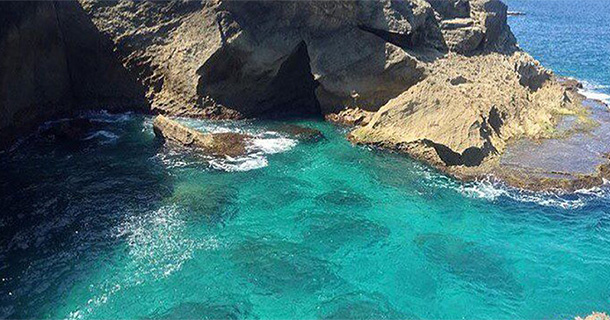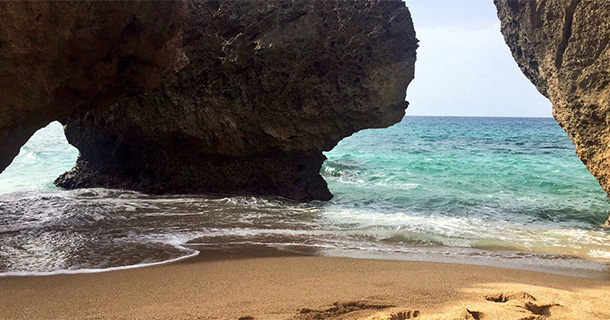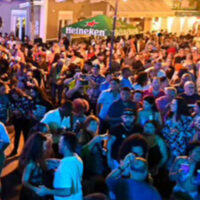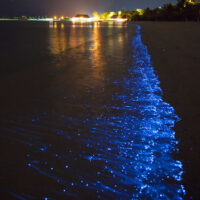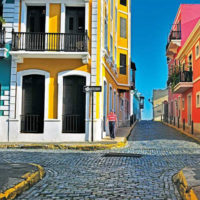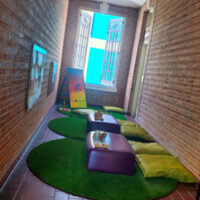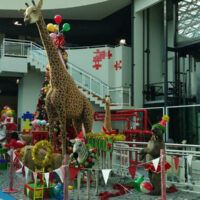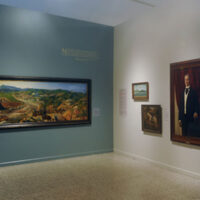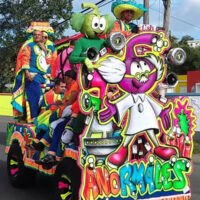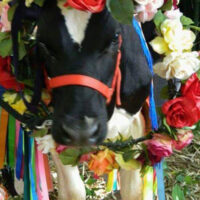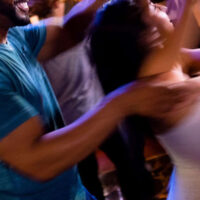
Puerto Rico
The Island of Enchantment
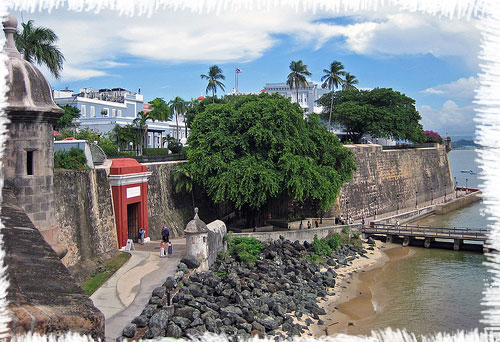 Puerto Rico, lovingly called "La Isla del Encanto" (The Island of Enchantment) and "La Perla del Caribe" (The Pearl of the Caribbean), is a U.S. territory nestled in the eastern Caribbean. Spanning 8,870 square kilometers and home to approximately 3.2 million residents, Puerto Rico captivates visitors with its vibrant history, rich culture, and breathtaking natural beauty, earning its place as one of the world’s most enchanting destinations.
Puerto Rico, lovingly called "La Isla del Encanto" (The Island of Enchantment) and "La Perla del Caribe" (The Pearl of the Caribbean), is a U.S. territory nestled in the eastern Caribbean. Spanning 8,870 square kilometers and home to approximately 3.2 million residents, Puerto Rico captivates visitors with its vibrant history, rich culture, and breathtaking natural beauty, earning its place as one of the world’s most enchanting destinations.
At the heart of the island lies its capital, San Juan, a city where centuries-old colonial architecture meets lively neighborhoods and cobblestone streets. Beyond its urban charm, Puerto Rico boasts diverse landscapes—from emerald-green mountains blanketed in tropical rainforests to fertile valleys and unspoiled beaches kissed by turquoise waters. The island’s biodiversity is equally mesmerizing, featuring creatures like the green iguana, vividly colorful parrots, and the beloved coquí, a tiny frog whose melodious chirps are a hallmark of Puerto Rican nights.
Puerto Rico offers endless adventures for every traveler. Explore the lush trails of El Yunque National Forest, marvel at the magical glow of its bioluminescent bays, dive into crystalline coral reefs, or experience world-class fishing. The island also offers stunning beaches, fascinating museums, and a dynamic cultural scene. Festivals such as La Fiesta de San Sebastián and culinary delights like mofongo and lechón asado immerse visitors in its traditions, while contemporary gastronomy presents innovative twists on local favorites.
With a blend of natural wonders, rich history, and vibrant culture, Puerto Rico offers an unforgettable and immersive experience for anyone lucky enough to explore its shores.
History
Puerto Rico’s history is rich and diverse, stretching back thousands of years. Before European explorers arrived, the island was inhabited by the Taíno people, part of the larger Arawak group. The Taínos developed a sophisticated agricultural society, cultivating crops like cassava, maize, and tobacco, and engaging in trade with neighboring Caribbean islands. They built villages, crafted intricate pottery, and had a well-developed spiritual and social structure.
In 1493, Christopher Columbus arrived on his second voyage to the Americas and claimed the island for Spain, naming it San Juan Bautista in honor of St. John the Baptist. The Spanish colonization that followed had profound effects on the indigenous population, with many Taínos dying from diseases brought by the Europeans or being forced into labor. Over the centuries, the island became a vital part of Spain's colonial empire, serving as a key military and naval outpost.
Puerto Rico remained under Spanish control for over 400 years, during which it became a strategic military stronghold in the Caribbean, protecting Spain’s interests in the New World. The island’s importance is reflected in its imposing colonial architecture, including the Castillo San Felipe del Morro and La Fortaleza, both of which stand as symbols of Puerto Rico’s role in defending Spain’s empire. Despite the island’s strategic importance, its population grew slowly, and it remained relatively underdeveloped compared to other Caribbean colonies.
The political landscape shifted dramatically in 1898 after the Spanish-American War. Following Spain’s defeat, Puerto Rico was ceded to the United States under the Treaty of Paris, marking the end of over 400 years of Spanish rule. The U.S. took control of the island, and although Puerto Ricans were granted U.S. citizenship in 1917 through the Jones-Shafroth Act, Puerto Rico remained an unincorporated U.S. territory without full representation in the U.S. Congress.
In the following decades, Puerto Rico's political status has been the subject of ongoing debate. It became a commonwealth in 1952, granting the island a degree of political autonomy with its own constitution, local government, and a non-voting delegate in the U.S. Congress. Despite this autonomy, Puerto Rico’s residents do not have voting representation in presidential elections, and they are subject to federal laws. The island's political status continues to be a contentious issue, with various movements advocating for statehood, independence, or maintenance of the current commonwealth status.
Today, Puerto Rico remains a vibrant cultural hub, blending its indigenous roots, Spanish heritage, and American influences. Its history continues to shape the island's identity, making Puerto Rico a unique and dynamic part of both the Caribbean and the United States.
Culture
Puerto Rican culture is a vibrant fusion of Taíno, African, and Spanish influences, which come to life through its music, dance, art, and cuisine. Traditional music genres like bomba and plena are deeply rooted in the island’s African heritage, with origins tied to African slaves and their descendants. These rhythms have evolved over time and continue to be central to celebrations and festivals. Salsa, merengue, and bachata, while also originating from broader Caribbean traditions, have become emblematic of Puerto Rican identity, blending local sounds with influences from across the Caribbean. The island is also the birthplace of reggaeton, a globally recognized genre that emerged in the 1990s, combining hip hop, dancehall, and Latin rhythms.
Puerto Rican cuisine, or comida criolla, is a flavorful fusion of Spanish, African, and Taíno ingredients, with a unique emphasis on bold spices, plantains, and root vegetables. Iconic dishes such as mofongo (mashed plantains), lechón asado (roast pork), and arroz con gandules (rice with pigeon peas) are not only staples of Puerto Rican dining but also symbolize the island’s agricultural history. The diet is heavily influenced by the availability of local ingredients such as yucca, papaya, and tropical fruits. Visitors will also enjoy fresh seafood, including popular dishes like pescado frito (fried fish), as well as street foods like tostones (fried plantains) and alcapurrias (fried stuffed fritters), often filled with meat or seafood. The tradition of “sancocho” (a hearty meat and vegetable stew) reflects the island’s communal nature, as families often gather to share large meals.
Spanish is the primary language spoken in Puerto Rico, though English is commonly used, especially in business, tourism, and government contexts. While Spanish is central to daily life, many Puerto Ricans are bilingual, and code-switching between both languages is common. This bilingual environment enhances the island’s charm, offering visitors a unique blend of linguistic and cultural diversity. Puerto Rico’s education system, which offers both English and Spanish language instruction, supports this multicultural identity. Additionally, the island celebrates a variety of cultural and religious festivals, such as the San Sebastián Street Festival in Old San Juan, which showcases the island’s traditional music, art, and dance, and is a reflection of its Catholic heritage.
Puerto Rican art also plays an important role in the island’s cultural identity. From the vibrant murals of Santurce to the works of iconic artists like Francisco Oller, Puerto Rican art spans both traditional and contemporary styles. The island is home to many renowned museums, such as the Museo de Arte de Puerto Rico, where visitors can explore a vast collection of art that highlights the history and evolution of Puerto Rican culture.
Geography
 Puerto Rico boasts a remarkable and varied geography, ranging from lush, mountainous central regions to fertile valleys, tropical rainforests, and pristine beaches with crystal-clear turquoise waters. The island is dominated by the Cordillera Central mountain range, which stretches across its heart, offering panoramic views and vibrant landscapes. Along its 500 kilometers of coastline, visitors can discover serene white-sand beaches, rugged cliffs, and vibrant coral reefs—ideal for snorkeling, diving, and exploring marine life.
Puerto Rico boasts a remarkable and varied geography, ranging from lush, mountainous central regions to fertile valleys, tropical rainforests, and pristine beaches with crystal-clear turquoise waters. The island is dominated by the Cordillera Central mountain range, which stretches across its heart, offering panoramic views and vibrant landscapes. Along its 500 kilometers of coastline, visitors can discover serene white-sand beaches, rugged cliffs, and vibrant coral reefs—ideal for snorkeling, diving, and exploring marine life.
Among Puerto Rico’s most significant natural wonders is the El Yunque National Forest, the only tropical rainforest in the U.S. National Forest system. This UNESCO-designated site is home to an extraordinary array of rare flora and fauna, including the iconic coquí frog, known for its soothing nighttime calls. El Yunque offers scenic hiking trails that lead to cascading waterfalls and breathtaking vistas of the island. In addition, Puerto Rico is famous for its bioluminescent bays, including those in Vieques, Fajardo, and Lajas, where tiny microorganisms illuminate the water with an ethereal glow, creating a truly magical experience. These bioluminescent bays are among the brightest in the world, attracting eco-tourists from around the globe.
Puerto Rico enjoys a tropical climate with consistently warm temperatures year-round. In the winter, average temperatures hover around 83°F (22.7°C), while summer highs typically reach 85°F (29.4°C). The coastal regions benefit from refreshing trade winds, making them feel cooler than expected, while the island’s mountainous interior provides a more temperate climate, with cooler temperatures and misty cloud forests. The combination of sea breezes and diverse elevations creates a wide range of microclimates, from coastal mangroves to highland cloud forests, making Puerto Rico an ecological paradise for nature lovers.
Size and Population
Despite its relatively small size—approximately 100 miles long and 35 miles wide (160 by 56 kilometers)—Puerto Rico is home to a striking range of ecosystems, from rainforests and caves to coral reefs and dry forests. Its climate, which transitions from tropical to subtropical in different regions, further enhances its biodiversity.
As of the 2022 U.S. Census estimates, Puerto Rico's population stands at approximately 3.2 million. This marks a continued decline from the 2020 census figure of 3,285,874. The population is primarily concentrated along the coastline and in the San Juan metropolitan area, where nearly half of the island's residents live. San Juan, the capital, is not only the largest city but also a key cultural and historical center, celebrated for its colonial architecture and vibrant heritage.
Puerto Rico's population density is one of the highest in the Caribbean, with over 407 residents per square kilometer. This urban concentration is typical of island regions, where most people reside in city areas.
Additionally, Puerto Rico's political status as a U.S. territory influences its economic, cultural, and legal framework. The island has also seen significant migration to the U.S. mainland in recent decades, as many Puerto Ricans seek better economic opportunities, a trend that continues to shape the island’s demographics.
Citizenship and Language
Puerto Ricans have been U.S. citizens since the Jones-Shafroth Act of 1917, but Puerto Rico’s political status as an unincorporated U.S. territory remains distinct. While Puerto Ricans can travel freely to the U.S. mainland without a passport, they cannot vote in U.S. presidential elections unless they reside in one of the 50 states. Additionally, Puerto Rico lacks voting representation in Congress, though the island is represented by a non-voting delegate in the U.S. House of Representatives. Both Spanish and English are official languages, with Spanish being the dominant language. Visitors from the U.S. mainland do not need a passport to enter, as Puerto Rico is a U.S. territory. However, Puerto Ricans residing on the island cannot participate in federal elections unless they move to a state.
Government and Political Status
Puerto Rico is an unincorporated U.S. territory with its own democratically elected government. The island's political system includes an executive branch led by a governor, a bicameral legislature, and an independent judiciary. Puerto Ricans are U.S. citizens and can freely travel to the mainland, but they do not have the right to vote in U.S. presidential elections unless they reside in one of the 50 states. Additionally, while they can elect a delegate to the U.S. House of Representatives, this delegate has limited voting power in Congress.
Puerto Rico's political status remains a topic of ongoing debate, with movements advocating for statehood, independence, or the continuation of its current commonwealth status. Statehood supporters argue that Puerto Rico should be granted full political rights as a state, while independence advocates seek full sovereignty from the U.S. The commonwealth status allows for local self-governance, but Puerto Rico's residents are subject to certain federal laws and do not have full representation in Congress.
The issue of Puerto Rico's political status has been the subject of several referendums, with the most recent votes showing a majority support for statehood, though the U.S. Congress has yet to take action on the matter. The debate over the future of Puerto Rico continues to shape its relationship with the United States and its place in global geopolitics.
People and Identity
Puerto Ricans, or Boricuas, take great pride in their rich heritage, which traces back to the indigenous Taínos who originally called the island Borinquén. The term Boricua has become a symbol of the island's enduring cultural identity, blending the historical roots of its people with the dynamic vibrancy of modern Puerto Rico. This unique identity is shaped by the intersection of indigenous, African, and Spanish influences, which is reflected in the island's music, art, traditions, and everyday life.
Festivals like the Fiestas de la Calle San Sebastián and national holidays such as Día de la Constitución highlight the deep sense of community and the joy of celebration that define Puerto Rican culture. Central to Puerto Rican life are the strong family bonds, which provide a foundation of support. It is common for extended families to live in close proximity, fostering a sense of solidarity that extends beyond the household.
The island’s culinary traditions also reflect this cultural fusion, with iconic dishes like mofongo, lechón asado, and arroz con gandules blending African, Spanish, and Taíno influences into a distinctive Puerto Rican cuisine. Beyond food, Puerto Ricans are known for their resilience in the face of challenges, from natural disasters to economic hardships. This indomitable spirit is a hallmark of Puerto Rican pride, both on the island and in diaspora communities worldwide.
Puerto Ricans have made significant contributions to global culture, from music icons like Ricky Martin and Daddy Yankee to legendary athletes such as Roberto Clemente and Juan Pablo Montoya. This blend of pride, resilience, and creativity continues to shape the Puerto Rican identity, making it a vibrant and influential force in the world.
Municipalities
Puerto Rico is divided into 78 municipalities, each with its own local government, led by a mayor and a municipal legislature. These municipalities function similarly to counties in the U.S. and offer a wide array of experiences, each reflecting the island’s rich diversity. Every municipality has its own distinct culture, history, and attractions, contributing to the vibrant mosaic of Puerto Rico's identity.
From the colonial charm of Ponce, often called the "Pearl of the South," to the world-class beaches of Rincón, renowned for its surf breaks, and the lush, mountainous landscapes of Utuado, home to natural parks and ancient indigenous sites, every corner of Puerto Rico reveals a unique aspect of the island’s culture, history, and natural beauty.
Beyond the bustling urban life of San Juan, Puerto Rico’s municipalities offer a wide range of environments. Smaller, rural towns like Lares and Jayuya are steeped in agricultural heritage and traditional festivals, offering a glimpse into the island’s rural soul. Meanwhile, coastal municipalities like Vieques and Culebra, with their pristine beaches and abundant wildlife, provide eco-tourism and natural beauty, attracting those seeking peace and adventure in nature.
Puerto Rico's municipalities also play a crucial role in managing public services such as education, healthcare, infrastructure, and public safety. Larger municipalities like Bayamón and Mayagüez are economic hubs, contributing to the island's industrial and commercial sectors. Others, like Luquillo and Fajardo, are known for their emphasis on tourism and environmental conservation, with attractions like the El Yunque National Forest and the bioluminescent bays.
Each municipality of Puerto Rico is an essential piece of the island’s diverse cultural and social fabric. Whether urban or rural, coastal or mountainous, they all contribute to making Puerto Rico a place where every visit offers something new and unforgettable to explore.
Coat of Arms
 The coat of arms of Puerto Rico has a distinctive structure, with a straight top that slopes obliquely on both sides toward the base. In its center is a green field from which seven red ribbons adorned with silver seals emerge. The lamb, a religious symbol associated with Jesus Christ, holds a white flag with a red cross, topped by a vane. The upper part of the shield bears the inscription "Joannes est nomen eius," which means "John is his name," connecting both the flag and the biblical reference to Saint John the Baptist, whose story is found in the New Testament.
The coat of arms of Puerto Rico has a distinctive structure, with a straight top that slopes obliquely on both sides toward the base. In its center is a green field from which seven red ribbons adorned with silver seals emerge. The lamb, a religious symbol associated with Jesus Christ, holds a white flag with a red cross, topped by a vane. The upper part of the shield bears the inscription "Joannes est nomen eius," which means "John is his name," connecting both the flag and the biblical reference to Saint John the Baptist, whose story is found in the New Testament.
Surrounding the shield is a border composed of 16 alternating squares, featuring castles, lions, flags, and crosses. The castles represent the Kingdom of Castile, the lions symbolize the Kingdom of León, the flags represent the unity of Castile and León, and the crosses stand for the Kingdom of Jerusalem.
On either side of the shield are the letters "F" and "Y" with crowns, yokes, and arrows. The "F" stands for Ferdinand, King Consort of Queen Isabella of Castile, while the yoke below the letter symbolizes the union of several Hispanic kingdoms. The "Y" represents Isabella I, Queen of Castile, and the arrows below her letter symbolize the conquest of the lands known as the West Indies. At the top of the shield is a crown, symbolizing the sovereignty granted by the Spanish monarchy to Puerto Rico.
Each element of the coat of arms has deep symbolic meaning:
- The green color represents the fertility of the land.
- The lamb symbolizes Jesus Christ according to Catholic iconography.
- The flag signifies peace among men.
- The book represents the Gospel.
- The letters "F" and "Y" represent King Ferdinand and Queen Isabella of Spain.
- The yoke symbolizes the Kingdom of Castile, the most dominant kingdom of the time.
- The arrows symbolize the strength and power of Castile.
- The crown is a symbol of sovereignty.
- The inscription "John is his name" recalls the island’s baptism as San Juan Bautista.
- The lions, castles, crosses, and flags represent the governance of Spain in Puerto Rico.
Puerto Rico Flag
 The flag of Puerto Rico consists of five horizontal stripes: three red and two white, alternating with a blue equilateral triangle on the left side. One side of the triangle forms the edge of the flag next to the mast. The color of the triangle is blue, and a white five-pointed star is superimposed on it, positioned so that one of its points faces upwards. The red stripes symbolize the blood shed by those who fought for freedom, while the white stripes represent the victory, peace, and rights of man that were achieved through that struggle.
The flag of Puerto Rico consists of five horizontal stripes: three red and two white, alternating with a blue equilateral triangle on the left side. One side of the triangle forms the edge of the flag next to the mast. The color of the triangle is blue, and a white five-pointed star is superimposed on it, positioned so that one of its points faces upwards. The red stripes symbolize the blood shed by those who fought for freedom, while the white stripes represent the victory, peace, and rights of man that were achieved through that struggle.
Historical Context and Symbolism
The flag’s design was created in 1895 by the Puerto Rican revolutionary movement, influenced by the Cuban flag, which represented the shared struggle for independence from Spanish colonial rule. The flag was adopted by the Puerto Rican Revolutionary Committee, a group that supported the idea of an independent Puerto Rico. The flag’s symbolism reflects the close ties between the Puerto Rican and Cuban independence movements, which were both led by activists with similar goals of self-determination and freedom from Spain.
The flag was first raised during the Yauco Intentona in 1897, an unsuccessful uprising against Spanish rule. Although it was not yet the official flag, it represented a powerful symbol of resistance and independence.
In 1952, Puerto Rico became a Commonwealth of the United States, and the flag was officially adopted as the symbol of Puerto Rico’s new political status. While it continued to symbolize Puerto Rican identity and nationalism, its meaning evolved within the context of the Commonwealth, representing Puerto Rico's unique political relationship with the United States.
Symbolism of the Colors and Shapes
- Red Stripes: The three red stripes represent the blood shed by those who fought for Puerto Rican independence and the vitality that sustains the island's government.
- White Stripes: The two white stripes symbolize peace, the rights of individuals, and the preservation of liberty and justice.
- Blue Triangle: The blue triangle represents the republican form of government, with the three branches—executive, legislative, and judicial—working in balance. The triangle’s three angles emphasize the integrity of the republic and the separation of powers.
- White Star: The five-pointed star represents Puerto Rico itself, embodying the island’s identity and its people. Initially, the star symbolized Puerto Rico’s desire for independence, but since the adoption of the Commonwealth status, it now represents Puerto Rico's position as a self-governing territory of the United States.
The Flag’s Role in Puerto Rican Identity
Although Puerto Rico remains a territory of the United States, the flag holds significant importance for many Puerto Ricans as a symbol of national identity, pride, and the ongoing aspirations for greater autonomy or independence. It represents the enduring struggle for self-determination and the collective history of the island's people, both in their resistance to Spanish rule and their ongoing fight for political recognition and rights within the United States.
The flag has become a powerful emblem in the Puerto Rican community, both on the island and in Puerto Rican diaspora communities, representing unity, culture, and the shared history of struggle. In addition to its political symbolism, it is also a symbol of pride and solidarity for many Puerto Ricans who seek a more independent or equitable status within the U.S.
National Anthem: "La Borinqueña"
"La Borinqueña," the national anthem of Puerto Rico, began as a musical composition in 1867 by Catalan musician Félix Astol Artés. Though some claim that Francisco Ramírez Ortíz, a native of San Germán, composed the melody, there is no official documentation confirming him as the author. The melody was inspired by a Spanish dance form called the "siguiriya," which has roots in Andalusian traditions.
In 1868, poet Lola Rodríguez de Tió wrote a set of revolutionary lyrics to reflect the political unrest on the island, especially in response to the Grito de Lares, an uprising against Spanish colonial rule. The original lyrics expressed a strong desire for Puerto Rican independence. However, in 1901, Manuel Fernández Juncos, a noted Puerto Rican journalist, composed a new set of lyrics that emphasized Puerto Rican pride and patriotism. These revised lyrics are the ones still used today.
While Ramírez Ortíz is credited with arranging the music for the anthem, his version was never formally recognized as the standard. The official orchestral arrangement was created by Ramón Collado in 1952, giving the anthem its current musical structure. This version was first performed as Puerto Rico's official anthem on July 25, 1952, during the proclamation of the Constitution of the Commonwealth of Puerto Rico, marking a significant moment in Puerto Rican political history.
The anthem has since become a symbol of Puerto Rican identity, pride, and cultural heritage. While an English translation of the lyrics exists, the Spanish version remains the official one. "La Borinqueña" is regularly performed at national, cultural, and ceremonial events, serving as a reminder of Puerto Rico's enduring spirit and its journey toward self-determination.

La Borinqueña
La tierra de Borinquen
donde he nacido yo.
Es un jardín florido
de mágico esplendor.
Un cielo siempre nítido
le sirve de dosel.
Y dan arrullos plácidos
las olas a sus pies.
Cuando a sus playas llego Colón,
exclamó lleno de admiración:
Oh! Oh! Oh!
Esta es la linda
tierra, que busco yo.
Es Borinquen la hija,
la hija del Mar y el sol.
del Mar y el Sol,
del Mar y el Sol,
del Mar y el Sol,
del Mar y el Sol!
Beaches of Puerto Rico
Coasts of Puerto Rico

Puerto Rico has long been celebrated as a premier tourist destination, attracting millions of visitors each year eager to experience its breathtaking landscapes and vibrant culture. Among the island's most remarkable features are its stunning beaches, often hailed as some of the most beautiful in the world. With over 270 miles of coastline, Puerto Rico is home to nearly 300 diverse beaches, each offering unique experiences and picturesque views.
Whether you’re looking for a warm retreat from winter’s chill or a place to create unforgettable memories, Puerto Rico is the perfect destination. Relax under the sun, ride the waves, or dive into the vibrant underwater world—there’s a beach to suit every preference.
For a closer look at the unique charm of each region, explore the Beaches by Coast section below.
Historic Sites and Landmarks in Puerto Rico
A Glimpse into the Island's History and Culture

Puerto Rico is an island of extraordinary beauty and deep historical significance. With a heritage that spans centuries, it boasts a wealth of historical sites and monuments that tell the story of its vibrant past. From breathtaking landscapes to charming towns rich in culture, Puerto Rico is a destination like no other.
Explore the island and its smaller neighboring gems through unforgettable sightseeing tours that highlight both historical landmarks and natural wonders. The island’s awe-inspiring scenery creates the perfect setting for outdoor adventures, blending history and nature in a way few places can match.
Whether you’re a history enthusiast, a nature lover, or simply curious about the island’s unique charm, Puerto Rico promises an unforgettable experience. Here are just a few of the iconic historical sites and landmarks that await your discovery:
Popular Historical Sites and Landmarks in Puerto Rico
Museums in Puerto Rico
A Tour of the Art Museums

Puerto Rico, a charming Caribbean island, captivates not only with its paradisiacal beaches and lush nature but also with its rich history and vibrant art scene. With nearly 80 museums spread across the island, it offers a fascinating variety of exhibits showcasing Puerto Rican art alongside global artistic expressions.
The island is a unique cultural destination, inviting exploration of a wide range of museums, from contemporary art and design to local history and traditions. No matter your interests, Puerto Rico has something special to offer every visitor.
Here are some of the most popular museums in Puerto Rico:
Museums in Puerto Rico
Puerto Rico Food Trails and Culinary Adventures
Exploring Puerto Rico's Culinary Scene
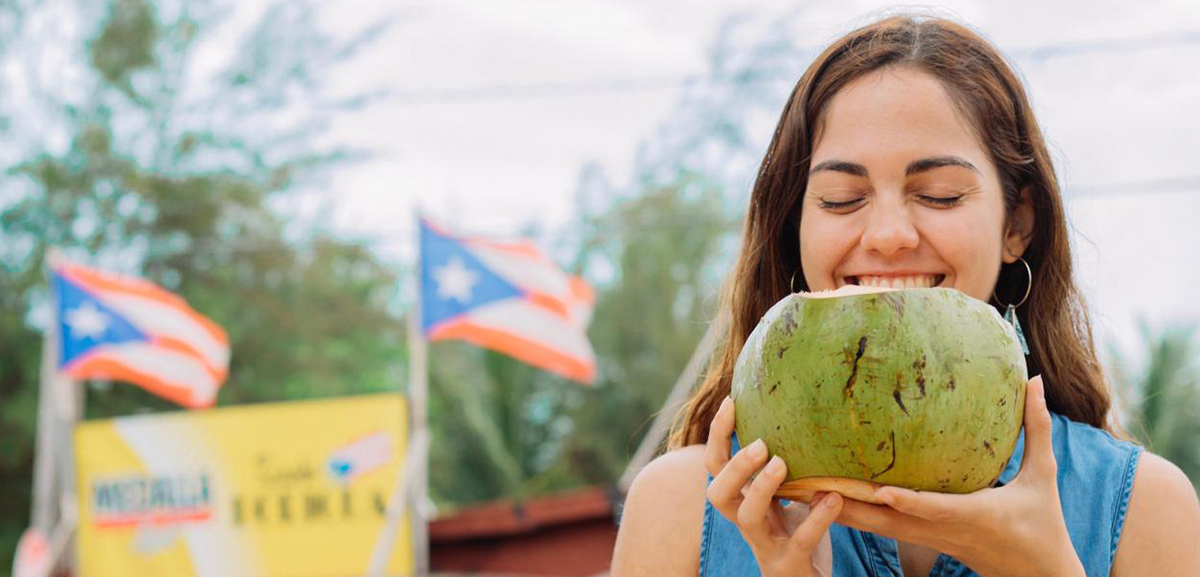
Puerto Rico is a culinary treasure, celebrated for its rich and diverse cuisine that reflects the island’s vibrant heritage. From beloved traditional dishes like mofongo and pastelón to modern twists on Caribbean flavors, there’s a delightful experience for every palate.
The island’s gastronomic routes provide an exciting way to explore this dynamic cuisine while immersing yourself in Puerto Rican culture and lifestyle. One must-try experience is the local tradition of "chinchorreo," where you hop from bar to bar and restaurant to restaurant, savoring refreshing drinks, mouthwatering food, and perhaps even enjoying some lively dancing. It’s a joyous and festive way to indulge in Puerto Rico’s culinary delights.
For those seeking unforgettable culinary adventures, Puerto Rico offers several gastronomic trails that promise a feast for the senses. Here are some of the most popular routes:
Puerto Rico Food Trails and Culinary Adventures
Puerto Rican Cuisine and Drinks
Exploring the Flavors and Traditions of the Island’s Culinary Heritage

Puerto Rican cuisine blends Spanish, African, and Taino influences, resulting in a variety of bold and flavorful dishes. Staples like rice and beans, plantains, and pork are seasoned with garlic, adobo, and spices. Dishes such as mofongo (mashed plantains with meat) and arroz con gandules (rice with pigeon peas) showcase the island's love for hearty meals. Puerto Rican seafood, including bacalao guisado (salted cod stew), reflects the island's coastal geography.
Puerto Rican drinks are just as diverse, with rum at the heart of many classic cocktails like the piña colada. Non-alcoholic beverages such as coconut water and fresh fruit juices offer a refreshing taste of the tropics. These culinary delights embody Puerto Rico's cultural fusion, making the island's food and drinks a must-try experience.
For those eager to explore the finest of Puerto Rican cuisine, the island offers a vibrant mix of bold flavors and cultural traditions. Here are some of the most popular dishes and drinks:
Puerto Rican Cuisine and Drinks
No post found
Annual Festivals in Puerto Rico
Puerto Rico, an Island of Festivals

Puerto Rico is a vibrant island brimming with culture and tradition, and its annual festivals celebrate everything that makes this destination unique. From religious observances to food and cultural celebrations, there is something for everyone to enjoy in Puerto Rico.
These festivals offer a wide array of activities and attractions to suit all tastes. Whether you’re passionate about music, food, art, or history, you are sure to find a festival in Puerto Rico that captures your interest.
Annual Festivals in Puerto Rico
Music in Puerto Rico
The Rhythmic Tapestry of Puerto Rican Music

Music in Puerto Rico is a powerful medium of cultural expression and storytelling, bridging generations and uniting communities. It embodies the island’s spirit, celebrating its history, struggles, and triumphs. The vibrant rhythms of Puerto Rican music not only captivate local audiences but also resonate globally, showcasing the island’s rich cultural heritage and diversity.
Nestled in the heart of the Caribbean, Puerto Rico is renowned not only for its stunning landscapes but also for its profound musical legacy. The island’s music is a unique blend of influences, reflecting its complex history and cultural tapestry. From the soulful melodies of salsa to the infectious beats of reggaeton, Puerto Rican music has played a pivotal role in shaping the global music scene.
The Vibrant Genres of Puerto Rican Music
Puerto Rican music spans a variety of genres, each with its own rich history and cultural significance. Here are some of the key styles that define the island’s dynamic musical landscape:
Puerto Rican Music Guide



